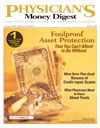Capitalize on the Four-year Election Cycle
Since the first US presidency in 1776, the 4-yearelection cycle has had a major influence on allaspects of American life. Not only is it a periodof political change, it has also been a time of tremendouseconomic and market transformation as well—and no 2 years are exactly alike.
Balancing the Economy Scale
The Almanac Investor
Following an election, the winners must often dealwith the excesses of previous administrations, andthis can mean painful change in the early stages of anew administration. Any corrections the economyneeds, such as controlling inflation or reducing spending,are attempted during this period. Sometimes intheir zeal to get the economic house in order, governmentsoverdo it. This is a reason why most of theworst bear markets in history started in post-electionyears. Examples include years 1929, 1937, 1957,1969, 1973, 1981, and 2001. And markets have thescars to prove it. According to (Wiley; 2005), between 1913 and 2005, the DowJones Industrial Average has dropped an average22.2% from its post-election high to a mid-term yearlow in September of the second year of a mandate.
But the good news is that governments have ahabit of turning the printing presses on and doingeverything they can to promote economic prosperityover the following 2 pre-election years. This includesdropping interest rates, granting tax breaks, andintroducing economic assistance programs to put thevoter in a good mood.
Coming Full Circle
Political Control of the
Economy
Why is this cycle so predictable? According toEdward Tufte in his book (Princeton University Press; 1980), it's governmentmanipulation, plain and simple. Since 1833,the Dow has gained 228% in post-election and midtermyears compared to an incredible 746% for preelectionand election years.
What does the election cycle mean for the Dow in2006-2007? An average drop of 22.2% from theelection year high of 10,941 puts the mid-term electionyear Dow low at 8512 in 2006, if we just stickto the averages. From the mid-term election year lowto the pre-election year high, the Dow average gainof 50% between 1833 and 2004 would put it at12,768 by November to December 2008. It shouldalso hearten investors to know that if 2007 is a loser,it will be the first time since 1939 that the Dow lostmoney in a pre-election year.
In lieu of an unexpected geopolitical or economiccalamity, no matter where the Dow IndustrialAverage is September or October 2006, it will be substantiallyhigher by the time voters are getting readyto go to the polls in November 2008, if history is anyguide—and you can bet your portfolio on it.
Matt Blackman, market analyst for TradingEducation.com, is atechnical trader, author, reviewer, and keynote speaker. He is amember of the Market Technicians Association and TechnicalSecurities Analysts Association. He welcomes comments or questionsat matt@tradesystemguru.com or visit his Web site athttp://www.tradesystemguru.com.
